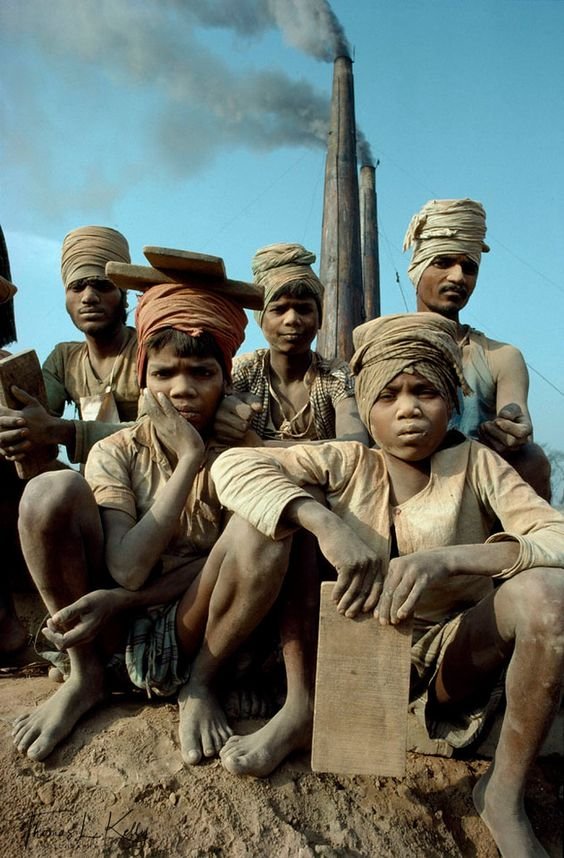Addressing Youth Unemployment: Strategies for Sustainable Economic Growth
This content has been archived. It may no longer be relevant
India’s youth is one of its greatest advantages. In order to fully realise its potential,

Like many other South Asian nations, India is home to a youthful population. This offers a chance for future economic expansion but also poses a problem for policymakers in terms of job creation. The World Bank estimates that between 2020 and 2050, the working-age population in South Asia would grow by almost 254 million, or 30.6% of the global increase. Only India will contribute 16.5% of the growth. In the meantime, most of the industrialised world will see declines in the working-age population, with China’s falling by almost 226 million over the same period.
It is obvious that creating new jobs in South Asia, including India, is essential for the region’s and the world’s economic progress. However, recent increases in unemployment in India have sparked protests by young people across the nation. In addition to the increase in the labour supply, rising school enrollment and a growing youth migration away from agriculture are contributing to the rise in the unemployment rate. In 2005, just 16.3% of Indian women aged 15 to 29 were enrolled in schools or colleges. By 2018, this percentage had risen to 31.0%.
Furthermore, although though 43.5% of India’s workforce makes a living from agriculture and related industries like forestry and fishery, low productivity in the sector and stagnating governmental investment starting in the 1990s have encouraged a shift away from it. People in rural areas who are young and have moderate education levels are becoming more eager to leave agriculture and what is perceived as “disguised unemployment.”
Increasing enrolment in education and a growing exodus of young people from agriculture are swelling the jobless ranks.
Will India’s growing labour supply be absorbed by the lure of new, non-agricultural opportunities? Seemingly not.
Based primarily on government-published Periodic Labour Force Surveys, official employment statistics for India, research indicates that between 2012 and 2018, the number of potential non-agricultural workers—individuals who could work in industry, construction, or services with the right training—grew by 17.5 million annually.
As a result, unemployment rates in India have increased to an unprecedented level, particularly for men. In the meantime, women withdrew from the labour force, accounting for only 23.0% of employed workers in 2018 (compared to 42.8% in 2005) due to an insufficient number of new employment created in the economy. Likewise, there had been a notable increase in the percentage of women who disclosed their status as attending to domestic duties in their own households.
Prior to the Covid-19 pandemic, India’s economy was expanding quite quickly. However, India’s GDP growth dropped to negative rates (-7.3%) in 2020, the first year following the Covid-19 epidemic, depriving millions of its workers in the unorganised sector of their livelihood. The manufacturing sector’s sluggish job generation is the main cause of India’s employment crisis. India’s manufacturing labour force shrank from 61.3 million in 2012 to 58.6 million in 2018. In 2020, it increased slightly to 59.8 million. Following 2012, the majority of job losses were in small and micro industries.
A growing view in policy circles is that India’s labour laws on firing workers or reducing wages are over restrictive.
Thus, what steps are required to guarantee that the Covid-19 pandemic-related crisis in India’s economy is fully resolved and that sufficient employment is created? Policy circles are beginning to believe that India’s labour regulations, which prohibit terminating employees or lowering compensation, are too onerous and that, in the absence of such restrictions, firms would be more inclined to extend their workforce.
Just 12.3% of India’s 471.0 million workers are regular employees who are at least somewhat protected by labour rules and get social security benefits. The remainder primarily make their living as small-scale producers or casual labourers in varying degrees of informality. A moving picture from March 2020, when India was under countrywide lockdown due to the Covid-19 epidemic, showed of thousands of poor migrant workers walking hundreds of kilometers to return to their villages.
Policy recommendations that would weaken labor’s bargaining power and further cut pay are arguably harsh in light of the appalling living and working conditions faced by India’s informal labourers. On the other hand, certain Indian state governments enacted legislation permitting an extension of the working day from eight to twelve hours in reaction to the Covid-19 pandemic. As 29 labour laws are being combined into four labour codes by the Union government of India, experts worry that this could erode the power of workers.
However, there is little talk about how the low salaries earned by the majority of India’s labour could be a drag on aggregate demand and economic growth in the country’s policy circles and mainstream media. As per the most recent data available from a consumption-expenditure survey conducted by the National Sample Survey Organisation in 2011–12, the share of the richest 5% in urban India’s spending on durable goods (like refrigerators and furniture) was approximately 64%, while the poorest 50% contributed only 13.4% of the total expenditure on these items.
It is growing clearer with time that the crisis relating to economic and employment decline in India can be overcome only by widening the sources of demand.
With time, it will become increasingly evident that the only way to address India’s economic and employment crisis is to increase demand from a wider range of sources and to increase investment in and consumption by the impoverished.
in 1988 that wages have a dual character. Wages are an important component of costs to capitalists, but they are also a source of demand.The firms should reduce costs by squeezing wages, in an economy that suffers from insufficient demand. Cutting wages, they posited, will shrink markets further and deepen a depression. They advocated “wage-led” economic growth or policies to raise workers’ wages and incomes, which, they said, would expand markets and recover an economy from depression.
some of the factories and machines may be lying idle, and therefore, capacity utilization rate (u = X/K) or the value of output as a share of the capital stock is less than its optimal level (assume that X is value of output, K is capital invested, W is wages and P is profits).
The profit share (π = P/X, or profit as a share of the value of output) may decline as wages and thereby wage share (W/X) increase. However, what matters (to the capitalists) is not profit share but profit rate (r = P/K), which is profits as a share of the capital invested or profit share multiplied by capacity utilization rate (r = π.u).
During a phase of “wage-led” economic growth, wage share may increase and profit share may decline, but profit rate may not fall because the higher demand that accompanies the wage increase allows firms to utilize their capacities better.
Some of the proposals could be to establish food processing enterprises or to provide cheap housing in rural areas. This kind of investment might have enormous multiplier effects. Millions of Indians still rely on agriculture as their primary source of income, and food processing can assist increase this sector.
Real advances in living and working conditions are due to India’s working classes, who have long been abused by the nation’s repressive economic and social structures. The only way this is possible is if government spending on developing workers’ skills, incomes, and purchasing power is greatly increased. An increase in government spending on education and health, which is currently low in India, could contribute to the advancement of human development. Along with other essential areas, the nation also has to invest a lot of money on highways, rural infrastructure, agricultural research, and public transportation.
Young people are becoming more and more prevalent in India and other South Asian nations, which presents a possible new source of demand that could stimulate the world economy. However, in order to realise this potential, policies that support low-income workers’ income growth are needed. These are the kinds of policies that defy conventional wisdom in economics. It is obvious that major policy changes are required if India is to take advantage of the advantages that a young population brings.




